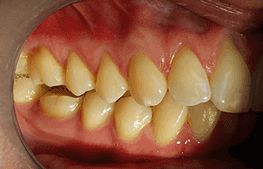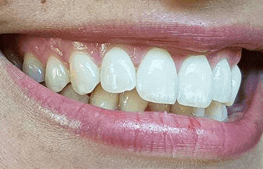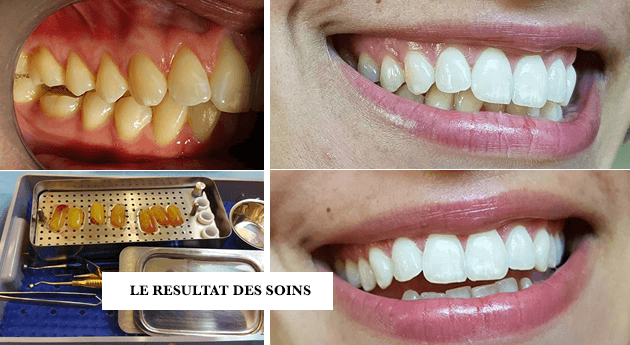analyses and treatments
gingival recession
Muco-gingival grafts are a surgical procedure
dedicated to exposed dental roots
or exposed dental implants
the treatment consists of gingival grafts
MICROSURGERY OF THE GUMS: MUCOGINGIVAL GRAFTS
ANALYSIS OF THE GINGIVAL CONTOUR IN DENTAL TREATMENTS
The analysis of the gingival contour is essential to harmonize the smile. It must be done from both an aesthetic and health perspective.
This analysis is essential. It precedes the establishment of a global treatment plan to obtain a good aesthetic result. Whether it is an operation to remove excess gum tissue, or to graft gum tissue when it is missing, it is important to think about the gingival remodeling protocol.
Muco-gingival surgery includes all surgical treatments for unsightly gum lesions such as gum recession. These protocols are studied here as strategies in the development of a treatment plan to rehabilitate the smile.
THE OBJECTIVES OF MUCOGINGIVAL MICROSURGERY
The dental surgeon removes gum tissue from the patient’s palate and grafts it onto the area of gum recession. This specimen can also be translated from a donor site.
The objectives of mucogingival microsurgery are as follows:
- Stop the progression of gum recession;
- Covering a bare root;
- Reduce dental hypersensitivity due to tooth exposure;
- Improve the aesthetics of the smile;
- Provide preventive keratinized gingiva in case a prosthesis or orthodontic treatment is planned.
gum recession


What is gum recession?
Gingival recession (or root denudation) is a change in the gum at the neck of the tooth. It is a gingival and bone retraction that leaves the dental root exposed.
Gingival recession is sometimes combined with an infectious periodontal pocket, which can complicate the situation.
The etiology of periodontal recessions
The etiology of gum recession is complex: there are often one or more predisposing factors coupled with one or more triggering factors.
These factors are mostly anatomical.
- Absence of keratinized tissue;
- Thin thickness and low height of keratinized tissue;
- Malposition of teeth;
- Brake and clamp traction;
- Vestibule too shallow;
- Bone dehiscence (recession of the bone under the gum);
- Bone Fenestration;
- Thin bone table.
-
These factors are mostly anatomical.
- Absence of keratinized tissue;
- Thin thickness and low height of keratinized tissue;
- Malposition of teeth;
- Brake and clamp traction;
- Vestibule too shallow;
- Bone dehiscence (recession of the bone under the gum);
- Bone Fenestration;
- Thin bone table.
YOU ARE UNIQUE!
CLINICAL CASES OF MUCOGINGIVAL SURGERY WITH GUM GRAFTS AND PRF
TREATMENT OF GUM RECESSION
The treatment is based on a gum graft. This will allow the consolidation of the gum to stop the progression of the disease.
The other solution is to perform an occlusal balancing. It is indicated when the recession is favored by a dental malposition.
When the problem comes from nocturnal bruxism (teeth grinding), the patient must wear a mouthpiece during the night. The splint will absorb the excess occlusal forces. It is made to measure according to an impression of the patient’s teeth.
Surgical protocols for gingival grafts
There are several operating protocols:
The harvested graft is complete: keratinized epithelium + connective tissue.
This technique increases and consolidates the keratinized gingiva. Root coverage is more or less complete (rarely total).
Only the connective tissue is removed: it will be buried under the epithelium of the recipient site.
This surgical protocol will allow for root coverage as well as the creation of attached gingiva or interdental papillae.
The dental surgeon comes and removes a part of the gum to move it. This technique will allow the patient to obtain a covering of the recessions as well as a contribution of gum.
This technique makes it possible to cover one or more gum recessions.
This protocol adds height to the stump before placing a dental crown.




